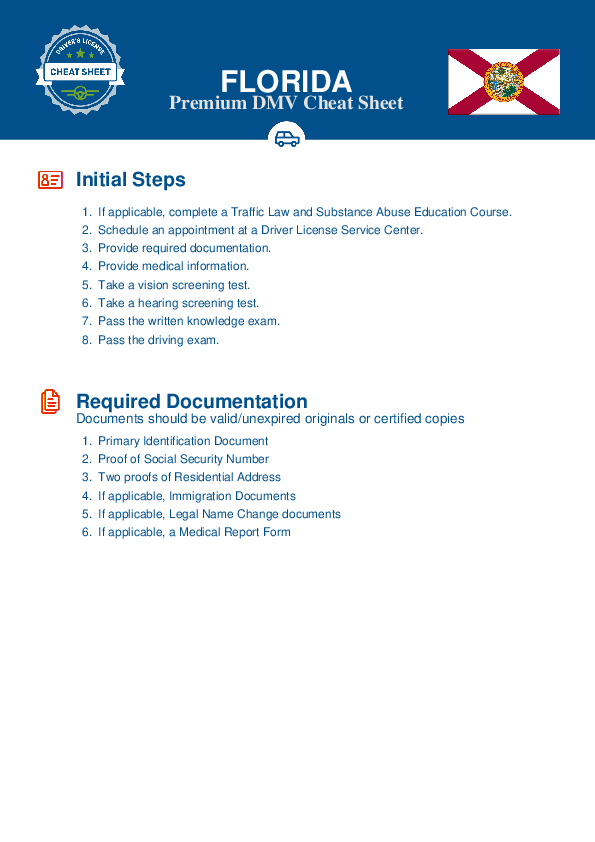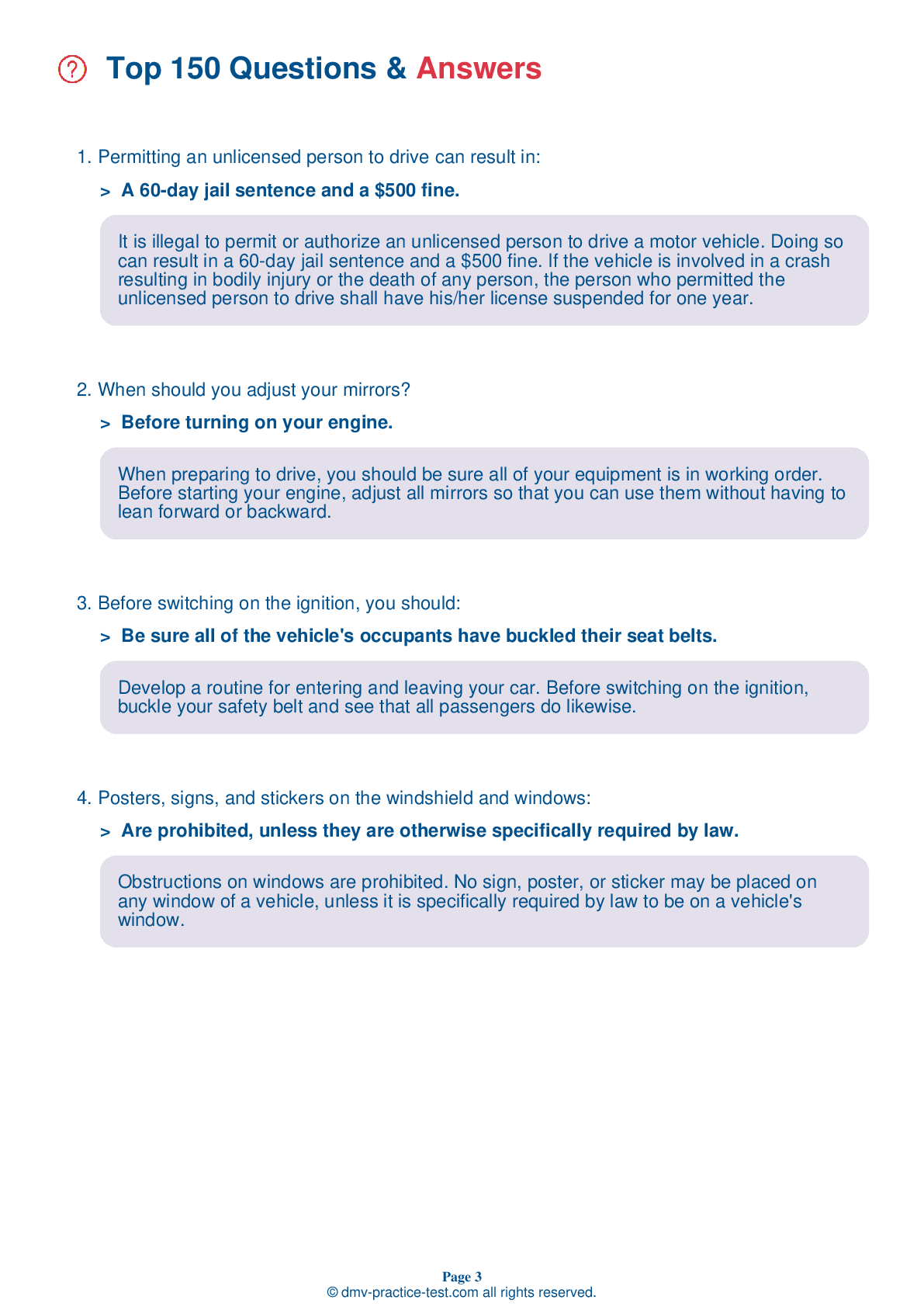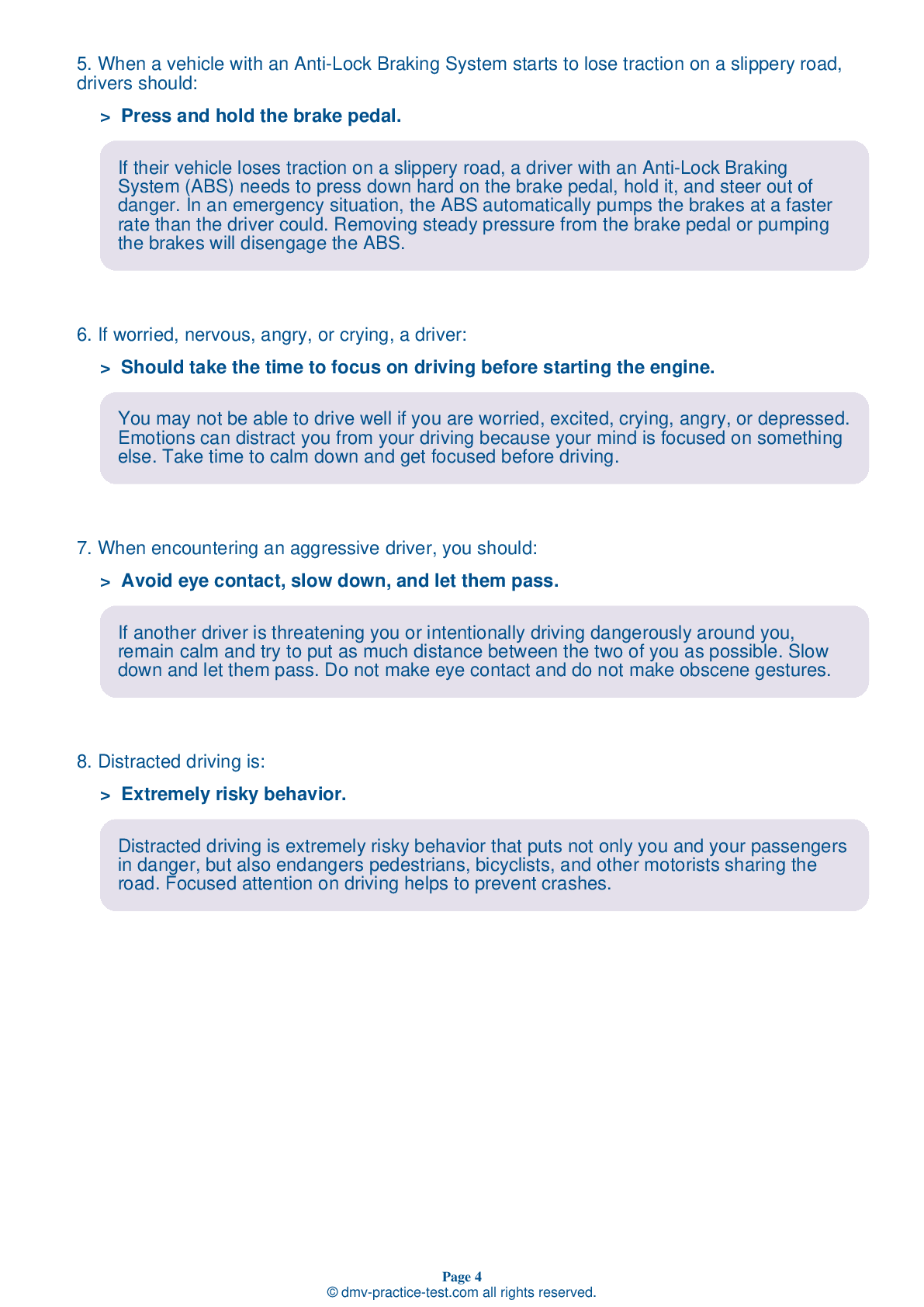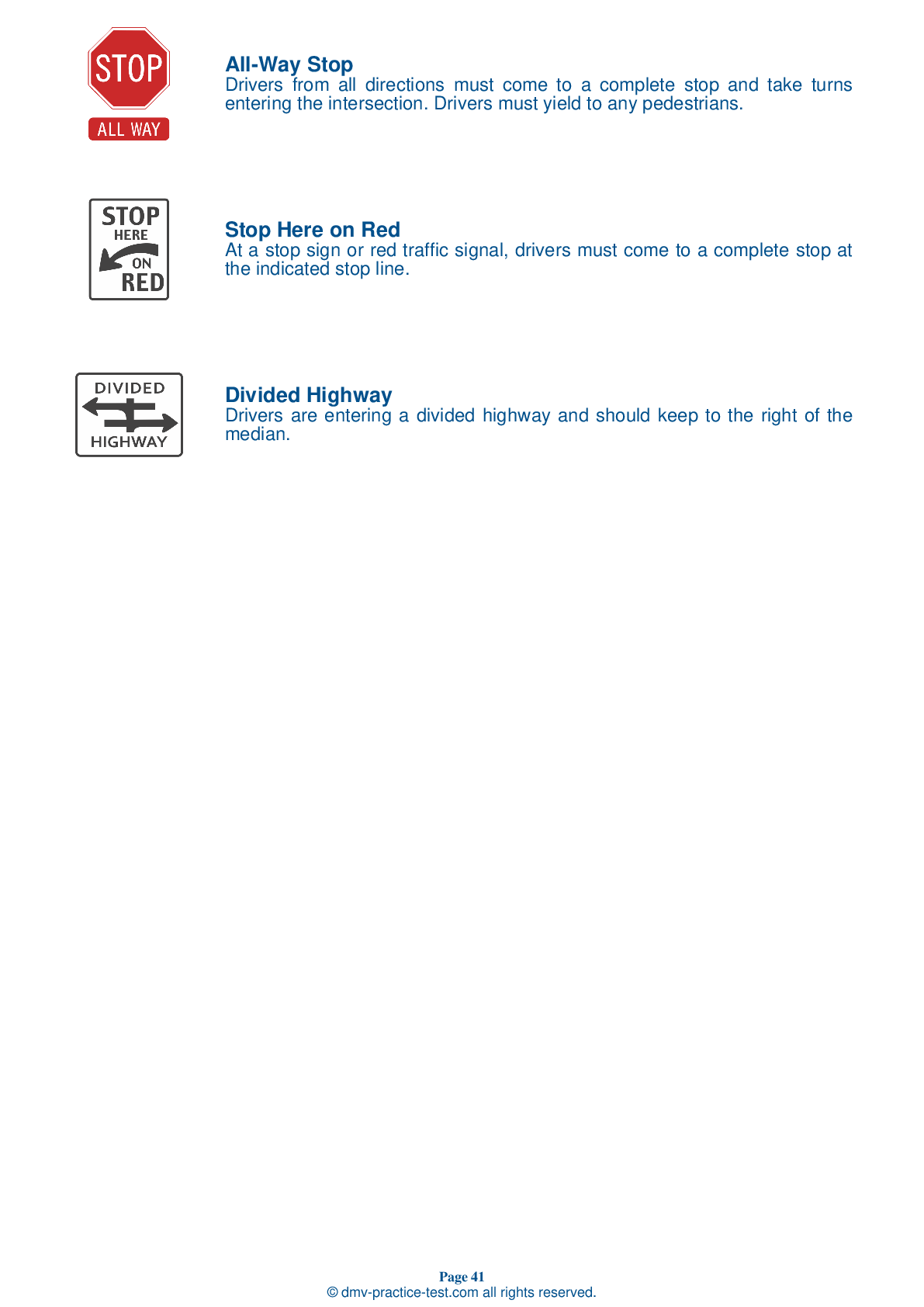FREE Florida DMV Practice Test #8 Page 7 of 7
This set of DMV practise tests for the Florida has been updated for January 2025. It includes questions based on the most important traffic signs and laws for 2025 from the Florida Driver Handbook. To study for the DMV driving permit test and driver's licence exam, use actual questions that are very similar (often identical!) to the DMV driving permit test and driver's licence exam.
Each question on the practise exam has a tip and explanation to help you recall the ideas. Questions about traffic rules, traffic signs, and driving statutes, as well as information from the Driver Handbook, will be included in the written portion of the official DMV test.
You must properly answer 40 of the 50 questions to receive the required passing mark. To help you prepare for your Florida instruction permit or driver's licence, take our DMV practise test.
The DMV exam is offered in a variety of languages.
Using any kind of testing assistance will result in an automatic fail, and the DMV may take additional action against your driver's licence, so stay away from it.
43 . Hydroplaning is usually caused by:
Your tires become less effective at clearing water from the road as you increase your speed. If you drive too fast, they may lose their grip entirely, leaving the vehicle sliding on a film of water. This is known as "hydroplaning."
44 . A flashing yellow light at an intersection means that you should:
A flashing yellow light at an intersection means "caution." If you approach such a light, slow down, look, and proceed with care.
45 . A slow-moving vehicle emblem is:
The slow-moving vehicle symbol is a reflective orange triangle. Expect vehicles using this emblem to be driving at speeds of 25 mph or slower.
46 . If worried, nervous, angry, or crying, a driver:
You may not be able to drive well if you are worried, excited, crying, angry, or depressed. Emotions can distract you from your driving because your mind is focused on something else. Take time to calm down and get focused before driving.
47 . Your chances of being in a collision begin to increase after consuming:
If you drink alcohol, even just one drink, your chances of being in a crash are much greater than if you did not drink any alcohol. No one can drink alcohol and drive safely, even if you have been driving for many years.
48 . If your car breaks down on a highway, you should:
If your vehicle breaks down on the highway, you should signal before carefully exiting the roadway and turning on your hazard flashers. Get as far off the road as possible and park in a location where other drivers can easily see you. Lift your hood to let other drivers know your vehicle is disabled.
49 . What are the colors of warning signs indicating upcoming hazards?
Warning signs that indicate approaching hazards are usually yellow with black lettering or symbols. Warning signs in work zones are orange with black lettering or symbols.
50 . What is the first thing you should adjust, if needed, when you get into a car to drive?
When preparing to drive, you should first adjust your seat to ensure that you are in a comfortable position and can see the road clearly. Adjust your mirrors and steering wheel to be effective when your seat is fully adjusted.
See the exact questions that will be on the 2025 Florida DMV exam.
99.2% of people who use the cheat sheet pass the FIRST TIME
LT gives us an insight on how the cheat sheet provided her with all the study questions she needed before taking her test.
Joe initially studied with the handbook and failed his test, he eventually found us online, studied and pass his test the first time around.



